JESUSPRECIADO789
Symbolism of Hummingbird Tattoo
Hummingbird tattoos are a beautiful and versatile choice for those who want to capture both the elegance of nature and a deeper personal meaning. Hummingbird tattoos are more than just an image—they embody themes of resilience, freedom, and the beauty of life. Here’s a look into what makes hummingbird tattoos so captivating:



Symbolism of Hummingbird Tattoos:
- Resilience and Endurance: Hummingbirds are known for their ability to hover in place and fly long distances despite their small size. This makes them a powerful symbol of resilience, perseverance, and overcoming challenges. For many people, a hummingbird tattoo represents the idea of facing hardships with grace and strength.
- Joy and Positivity: Hummingbirds are often seen as a symbol of joy, lightness of being, and the beauty of small things in life. They remind us to find happiness in the present moment and appreciate the little pleasures around us. This makes them a popular choice for those who want to express a positive, uplifting outlook on life.
- Freedom and Independence: Hummingbirds, with their incredible agility and speed, also represent freedom. They move swiftly in all directions, symbolizing a free spirit and independence. People often choose hummingbird tattoos to reflect their desire for personal freedom, self-reliance, or an adventurous lifestyle.
- Love and Beauty: Hummingbirds are frequently attracted to flowers, and the relationship between the bird and the flower is often used to symbolize love, beauty, and harmony with nature. A tattoo of a hummingbird feeding from a flower can be a metaphor for nourishing the soul or for a relationship that brings happiness and fulfillment.
- Transformation and Healing: In many cultures, the hummingbird is seen as a messenger of hope and renewal. A hummingbird tattoo can symbolize the ability to heal after a difficult time or embrace change with an open heart.



Hummingbird tattoos also carry significant cultural symbolism across various cultures. These small, agile birds have captivated people for centuries and are found in myths, folklore, and traditions worldwide. Here are some key cultural associations of hummingbird tattoos:
1. Native American Culture:
In Native American cultures, hummingbirds are seen as symbols of joy, beauty, and love. Different tribes have their own interpretations of hummingbirds:
- Joy and Good Luck: Many Native American tribes see the hummingbird as a sign of happiness and positivity. They believe that hummingbirds bring joy and good luck, and their presence is thought to uplift the spirit and bring good fortune.
- Love and Harmony: In some Native American traditions, hummingbirds are associated with love, beauty, and harmony with nature. They symbolize devotion and the fleeting beauty of love, much like the brief yet precious nature of the hummingbird itself.
- Messenger of the Spirits: Some tribes, such as the Hopi, regard hummingbirds as messengers between humans and the spirit world. They are believed to have a special connection with the divine, carrying messages from one realm to another.
2. Aztec Culture:
In ancient Aztec culture, hummingbirds had powerful symbolic significance. They were considered sacred birds associated with warriors and the sun god:
- Huitzilopochtli: The Aztecs believed that their god Huitzilopochtli, the god of war and the sun, took the form of a hummingbird. For the Aztecs, the hummingbird represented energy, vigor, and a warrior’s spirit. It was believed that fallen warriors would be reincarnated as hummingbirds to live among the flowers and continue their journey.
- Symbol of the Afterlife: Hummingbirds were also seen as the reincarnation of fallen warriors and those who had died in sacrifice. These spirits were thought to join hummingbirds to guide them in their travels and to bring messages of hope and connection to the living world.



3. South American Culture:
In South American cultures, especially among the Andean peoples, hummingbirds are symbols of resurrection and regeneration:
- Spiritual Rebirth: In Peruvian mythology, hummingbirds are associated with the idea of resurrection, hope, and rebirth. Their seemingly tireless energy and ability to travel long distances connect them to the idea of persistence, resilience, and renewal.
- Bringers of Rain: Some Andean legends describe hummingbirds as bringers of rain. The people believed that the hummingbird’s quest for nectar was closely tied to rain and fertility, giving the bird an important place in their belief systems.
4. Caribbean and Taino Mythology:
In the Caribbean, particularly among the Taino people, hummingbirds are seen as symbols of love and beauty:
- Love and Protection: The Taino regard hummingbirds as symbols of love and protectors of lovers. They are also seen as bringers of life, similar to how bees pollinate flowers, making them essential to the cycle of nature and growth.
5. Symbolism in Western Culture:
Hummingbirds are often associated with positivity, happiness, and resilience in modern Western culture:
- Positivity and Lightness of Being: Their quick and nimble nature, as well as their ability to hover and move swiftly, make hummingbirds symbols of positivity and the lightness of being. They remind people to take joy in the present moment, appreciate the little things, and stay adaptable and resilient in the face of challenges.
- Freedom and Independence: The hummingbird’s ability to move rapidly in all directions—up, down, forward, and backward—represents freedom, independence, and the ability to navigate through life’s complexities.



6. Hummingbird as a Totem or Spirit Animal:
In various spiritual practices, the hummingbird is regarded as a totem or spirit animal that provides guidance and inspiration:
- Adaptability and Resilience: As a spirit animal, the hummingbird is seen as a symbol of adaptability and resilience. People with the hummingbird as their totem are believed to have the ability to overcome obstacles, stay positive, and find joy even in difficult circumstances.
- Messenger of Joy: The hummingbird is often seen as a messenger of joy and a reminder to live life fully. As a spirit guide, it encourages people to seek out the sweetness in life and embrace moments of happiness.



Design Elements and Styles:
- Color and Vibrancy: Hummingbird tattoos are particularly beautiful when done in vibrant colors. The iridescent feathers in shades of green, blue, red, and purple make these tattoos stand out. Colorful hummingbird designs emphasize the joy and vitality that these birds represent. The use of color can add a lot of personality to the tattoo, making it eye-catching and lively.
- Black and Grey: For those looking for a more subtle or classic look, black and grey hummingbird tattoos can be incredibly elegant. The use of shading and line work helps bring out the intricate details of the bird’s feathers and wings, while still maintaining a timeless quality. Black and grey designs can also be quite versatile, suitable for both small, discreet placements or larger, more dramatic pieces.
- Floral Elements: Hummingbirds are often depicted feeding from flowers, adding a romantic and natural touch to the tattoo. Flowers such as hibiscus, lilies, or roses can be included to symbolize beauty, love, and connection to nature. The combination of a hummingbird and flowers adds depth to the meaning of the tattoo, emphasizing the themes of harmony and growth.
- Minimalist Style: For a more modern approach, hummingbird tattoos can be done in a minimalist style. Simple line work or small, delicate designs can still capture the essence of the bird, focusing on its graceful shape and movement. Minimalist hummingbird tattoos are often chosen for their subtlety and understated elegance.
- Realism: Realistic hummingbird tattoos are particularly impressive because of the level of detail that goes into creating a lifelike representation of this tiny bird. The challenge lies in capturing the intricate feather patterns, iridescent colors, and sense of movement—all elements that make the hummingbird so unique. A realistic hummingbird tattoo can be a stunning centerpiece that shows off the artist’s skill and the wearer’s love for nature.
- Symbolic Combinations: Hummingbirds are also frequently combined with other symbols, such as infinity signs, hearts, or even quotes. These combinations help personalize the tattoo and add more layers to its meaning. An infinity symbol with a hummingbird could signify endless hope or resilience, while a heart could emphasize love and positivity.



Popular Themes in Hummingbird Tattoos:
- Hummingbirds with Flowers: A very common theme is depicting hummingbirds feeding from or hovering near flowers. This symbolizes beauty, nature, love, and harmony. Flowers such as hibiscus, lilies, or roses are often included.
- Hummingbirds with Names or Quotes: To make the design more personal, some people incorporate the names of loved ones or meaningful quotes alongside the hummingbird. This enhances the emotional connection behind the tattoo.
- Hummingbirds in Pairs: A pair of hummingbirds can symbolize a romantic connection or deep bond with another person. The design can be symmetrical, creating a sense of harmony.
- Hummingbirds with Infinity Symbols: Combining a hummingbird with an infinity symbol can represent enduring love, resilience, and hope.
Placement Suggestions:
-
- Small and Simple Designs: Ideal for the wrist, ankle, or behind the ear, these are subtle and can be placed in easily concealable spots.
- Larger, Detailed Designs: Perfect for the shoulder, upper arm, thigh, or back, where there’s enough space to include intricate details, flowers, or multiple elements.
- Movement and Flow: Hummingbird tattoos often look best when placed on areas of the body that allow the design to follow natural lines, such as the shoulder, forearm, or side, enhancing the sense of motion.
- Shoulder or Upper Back: The shoulder or upper back is a popular placement for hummingbird tattoos, particularly if the design includes extended wings or flowers. This area allows for a larger canvas to capture the elegance and detail of the bird in flight.
- Wrist or Forearm: For those who prefer smaller or more visible tattoos, the wrist or forearm is an excellent choice. A hummingbird hovering or feeding can be beautifully displayed in these areas, and the tattoo’s placement can serve as a constant reminder of the message it represents.
- Side or Ribcage: The side or ribcage offers a larger space, ideal for more elaborate designs that include flowers or multiple hummingbirds. The natural curve of the ribcage can enhance the graceful movement of the bird.
- Ankle or Foot: Hummingbirds are also popular as ankle or foot tattoos, providing a discreet yet elegant design. The small size of the bird makes it well-suited for these areas, and the design can easily be expanded with vines or flowers for added effect.
- Behind the Ear: A tiny hummingbird tattoo behind the ear is a playful and delicate option. It’s a great choice for those who want something subtle yet meaningful, with the added charm of being somewhat hidden.



Conclusion
From a cultural and artistic standpoint, hummingbird tattoos are a wonderful blend of beauty, meaning, and symbolism. When clients choose a hummingbird tattoo, it often represents an aspect of their life journey, such as overcoming challenges, celebrating love, or embracing positivity.
Aiming to capture not only the elegance and vibrancy of the hummingbird but also the deep cultural significance that makes the tattoo so meaningful to the wearer. By incorporating elements that reflect the hummingbird’s cultural background, the tattoo resonates on a deeper level.
Whether it’s an Aztec-inspired design symbolizing warrior spirit, a Native American depiction for joy and harmony, or a vibrant piece celebrating love and beauty, hummingbird tattoos are rich in meaning and visually captivating—a perfect choice for anyone seeking a tattoo with profound cultural roots and personal resonance.



Tattoo Designs with Flowers: Blooming Stunning Masterpieces
Flower tattoos are an art form of their own, offering endless possibilities for creativity, elegance, and personal expression. Whether it’s a bold, colorful piece or a subtle, black-and-grey design, floral tattoos can always adapt to suit any style and carry deep meaning.
Composing Flower Tattoo Designs
- Single Flower vs. Bouquets: A single flower can create a simple, elegant design, while a bouquet or cluster of flowers can tell a richer story. Mixing different flower types can represent multiple ideas or emotions. For example, combining roses and lilies could symbolize a balance between love and purity.
- Placement: Flower tattoos can be designed to fit almost any body part. Smaller, delicate flowers look great on wrists, ankles, or behind the ear, while larger, more elaborate pieces like flower sleeves or back tattoos allow for complex designs with multiple elements—flowers, vines, and even additional elements like birds or butterflies.
- Incorporating Elements: You can elevate flower tattoos by adding extra elements like vines, geometric shapes, or even other nature elements like bees, birds, or butterflies. These additions can give the tattoo movement and depth, making it a piece of art that truly comes alive on the skin.
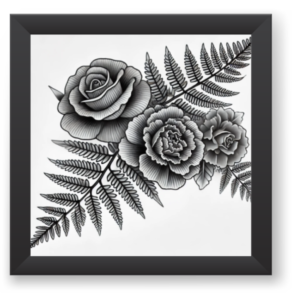
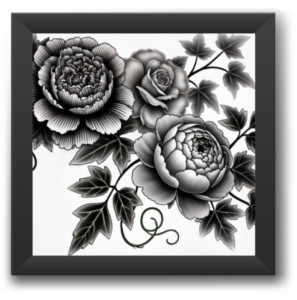
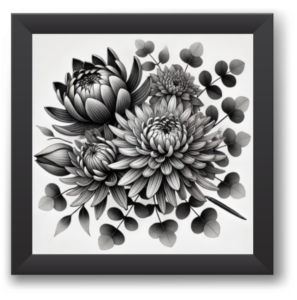
Which flower represents love, strength, or new beginnings?
Several flowers represent love, strength, or new beginnings, and their meanings can vary depending on culture and tradition. Here’s a breakdown of flowers that symbolize these concepts:
1. Love
- Roses: Especially red roses are the classic symbol of love and romance. They are often associated with passionate love, but different colors can represent other forms of love (e.g., pink for admiration, white for innocence, and yellow for friendship).
- Tulips: Known for symbolizing perfect and enduring love, tulips are often associated with deep, unconditional love.
- Lavender: Often represents love, devotion, and tranquility, and is associated with romantic love and peaceful relationships.
2. Strength
- Gladiolus: Named after the Latin word for “sword,” gladiolus flowers symbolize strength and integrity. Their tall, striking stems evoke resilience and determination.
- Lotus: The lotus flower, growing beautifully from muddy waters, symbolizes overcoming adversity and emerging stronger. It’s often associated with spiritual growth and inner strength.
- Oak Tree Flowers: Although more associated with the tree itself, oak flowers represent strength, endurance, and resilience due to the tree’s strong, enduring nature.
3. New Beginnings
- Daffodils: These bright yellow flowers are a universal symbol of new beginnings and rebirth. They bloom in early spring, signaling the start of a fresh chapter.
- Lotus: Beyond strength, the lotus is also a powerful symbol of rebirth and new beginnings because it grows out of muddy water to produce a beautiful bloom.
- White Roses: Symbolizing purity, innocence, and new beginnings, white roses are often chosen for weddings or significant life transitions.
For a tattoo, you could choose one of these flowers to represent the theme or even combine them to symbolize a journey that includes love, strength, and new beginnings all in one design.
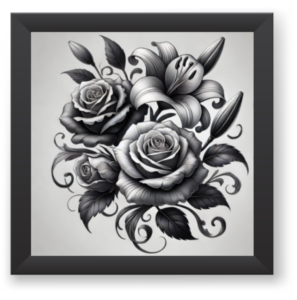
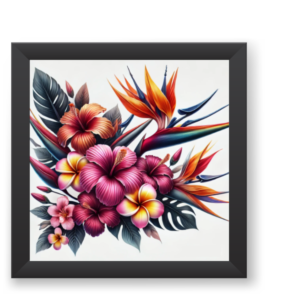
What are some popular flower tattoo designs?
Flower tattoos are incredibly popular because they offer a wide range of design possibilities and symbolic meanings. Some of the most popular flower tattoo designs include:
1. Rose Tattoos
- Symbolism: Love, passion, beauty, and balance.
- Popular Styles: Realism, traditional, and neo-traditional styles are common for rose tattoos. They can be done in vibrant colors or black and grey.
- Variations: Red roses are the most common, but white, yellow, and even black roses each carry their own meanings.
2. Lotus Flower Tattoos
- Symbolism: Spirituality, purity, enlightenment, and rebirth.
- Popular Styles: Often seen in watercolor or delicate line work, lotus tattoos are popular in spiritual and minimalist designs.
- Placement: Lotus flowers are often placed on the back, sternum, or wrist due to their symmetrical beauty.
3. Cherry Blossom Tattoos
- Symbolism: Beauty, transience of life, and renewal.
- Popular Styles: Japanese-style tattoos often feature cherry blossoms, either as standalone pieces or in sleeves or back tattoos. Watercolor cherry blossoms are also popular.
- Cultural Significance: In Japan, cherry blossoms (sakura) represent the fleeting nature of life and beauty.
4. Peony Tattoos
- Symbolism: Prosperity, romance, and honor.
- Popular Styles: Peonies are often done in Japanese-style tattoos, but also in traditional and neo-traditional designs. Their lush petals allow for dynamic shading and bold colors.
- Use in Sleeves: Peonies are commonly used in large, intricate designs like sleeves or back pieces.
5. Daisy Tattoos
- Symbolism: Innocence, purity, and new beginnings.
- Popular Styles: Minimalist or fine-line designs suit daisy tattoos, and they’re often chosen for their simplicity and charm.
- Placement: Because of their small and delicate appearance, daisies are popular on the wrist, ankle, or behind the ear.
6. Sunflower Tattoos
- Symbolism: Happiness, positivity, and loyalty.
- Popular Styles: Sunflowers are often done in bright, bold colors to capture their cheerful nature. Realism and traditional styles are common.
- Variations: They can be used as standalone pieces or combined with other elements like bees, butterflies, or geometric shapes.
7. Lily Tattoos
- Symbolism: Femininity, purity, and renewal.
- Popular Styles: Lilies are often portrayed in black and grey realism or watercolor for a soft, elegant effect. White lilies are associated with purity, while tiger lilies represent wealth and confidence.
- Placement: Lilies are commonly placed on the side of the body, shoulders, or arms.
8. Orchid Tattoos
- Symbolism: Luxury, strength, beauty, and elegance.
- Popular Styles: Orchids are often rendered in vibrant colors with intricate detail in realism or neo-traditional styles. Their exotic appearance makes them stand out in tattoo designs.
- Cultural Significance: In some cultures, orchids symbolize fertility and virility, making them popular choices for personal symbolism.
9. Lavender Tattoos
- Symbolism: Serenity, calmness, and devotion.
- Popular Styles: Often chosen for minimalist or delicate line tattoos, lavender stems create graceful, elegant designs.
- Placement: Lavender is commonly tattooed on the forearm, collarbone, or ankle for a subtle, calming effect.
10. Hibiscus Tattoos
- Symbolism: Beauty, delicate nature, and femininity.
- Popular Styles: Often seen in tropical-themed tattoos, hibiscus flowers are portrayed in vibrant colors like red, pink, or orange, usually in a watercolor or traditional style.
- Cultural Significance: In Hawaiian culture, the hibiscus is a symbol of beauty and a welcoming spirit.
11. Wildflower Tattoos
- Symbolism: Freedom, resilience, and individuality.
- Popular Styles: Wildflowers are often done in fine-line styles or watercolor, making them feel light and whimsical.
- Custom Combinations: Many people opt for personalized wildflower bouquets that can include different flower types to represent various aspects of their personality or life journey.
12. Poppy Tattoos
- Symbolism: Remembrance, peace, and hope.
- Popular Styles: Poppy tattoos are often done in realism or watercolor. The red poppy is also a symbol of those who have served in war, making it a popular choice for memorial tattoos.
13. Tulip Tattoos
- Symbolism: Perfect love, elegance, and grace.
- Popular Styles: Tulips are often depicted in soft colors and minimalist styles, but they can also be portrayed in bold neo-traditional designs.
- Placement: Tulips are common in forearm, shoulder, or ankle designs due to their tall, elegant stems.
14. Magnolia Tattoos
- Symbolism: Dignity, perseverance, and nobility.
- Popular Styles: Magnolia tattoos are often portrayed in black and grey realism or soft watercolor to capture their delicate petals. They are a symbol of natural beauty and grace.
15. Vine and Flower Combination
- Symbolism: Growth, interconnection, and life journey.
- Popular Styles: Vines and flowers together create a sense of flow and movement. Common flowers for vine designs include roses, jasmine, and morning glories.
- Placement: Vine and flower combinations are perfect for wrap-around designs on the arm, thigh, or ribcage.
These flowers can be mixed and matched based on personal symbolism, color preference, and style to create a unique tattoo design tailored to the individual’s story.
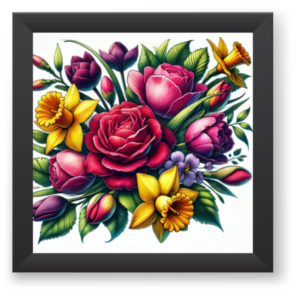
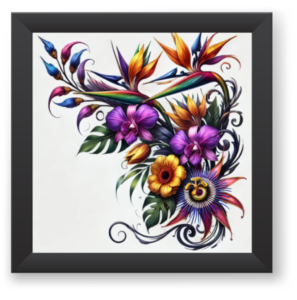
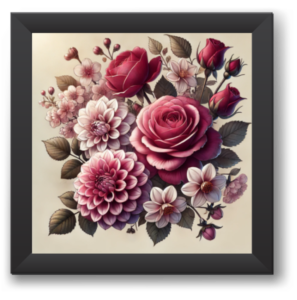
Making your flower tattoo unique is all about personalizing the design in a way that reflects your individuality, story, and style. Here are some creative ideas to help you craft a one-of-a-kind flower tattoo:
1. Incorporate Personal Symbolism
- Meaningful Flowers: Choose flowers that hold personal significance. For example, a flower that blooms in your birthplace or one that reminds you of a loved one.
- Birth Flowers: Use your birth flower (or that of a loved one) to create a meaningful tattoo. Each month has a specific flower, like roses for June or daisies for April.
- Cultural Symbolism: Incorporate flowers that are meaningful to your heritage or spiritual beliefs, such as cherry blossoms in Japanese culture or lotuses in Eastern philosophy.
2. Custom Combinations
- Mix Flower Types: Combine multiple flowers in one design that each symbolize different aspects of your personality or life. For instance, you can blend a rose (love), a lotus (spirituality), and a sunflower (happiness).
- Unique Bouquets: Instead of a typical bouquet arrangement, create a personalized cluster of different flowers that tell your own story. You can add wildflowers for freedom or rare blooms for uniqueness.
3. Play with Colors
- Custom Color Palette: Opt for non-traditional or unexpected color choices, like blue roses, purple sunflowers, or pastel peonies. You can use color to alter the flower’s symbolism or simply to make the design stand out.
- Gradient Effects: Add gradient shading to your flowers for a dynamic, eye-catching look. This could blend one color into another, creating a stunning ombré effect.
4. Add Symbolic Elements
- Incorporate Animals: Add bees (representing hard work), butterflies (transformation), or birds (freedom) around your flowers to bring extra layers of meaning to the tattoo.
- Incorporate Geometric Shapes: Combine flowers with geometric shapes like mandalas, triangles, or circles. This contrast between organic and structured elements creates a visually striking and modern design.
- Water Elements: If you’re inspired by nature, consider adding water elements like droplets, splashes, or flowing rivers. This could symbolize growth, cleansing, or life.
5. Experiment with Tattoo Styles
- Realism: Choose hyper-realistic flower tattoos for a lifelike effect, where every petal, vein, and detail is meticulously shaded.
- Watercolor: A watercolor effect can make your tattoo look like a painting, with soft, blurred edges and vibrant, fluid colors. This style is especially beautiful for flowers like cherry blossoms or peonies.
- Minimalist Line Art: For a sleek and modern look, opt for minimalist line art. Delicate, fine lines can create an elegant design, particularly if you prefer small or subtle tattoos.
- Neo-Traditional or Abstract: For a more artistic and bold look, you can choose a neo-traditional style with exaggerated shading or an abstract style that plays with unconventional shapes and forms.
6. Placement and Flow
- Unique Placement: Instead of typical spots like the forearm or back, choose more unusual placements like behind the ear, along the spine, or across the ribs. This can give your flower tattoo a more intimate and personal feel.
- Wrap-Around Designs: Design your tattoo to flow around your body, like wrapping around your wrist, ankle, or even as a full sleeve. This creates a dynamic sense of movement and turns your tattoo into a flowing piece of art.
7. Add Text or Script
- Meaningful Quotes or Names: Combine your flower tattoo with text—like a favorite quote, a loved one’s name, or a word that resonates with you. The font style you choose can enhance the design, whether it’s delicate cursive or bold lettering.
- Dates: Incorporating significant dates (such as anniversaries, birthdates, or important milestones) into your design can make it even more personal.
8. Include a Personal Story
- Timeline or Journey: Incorporate a story or timeline within your flower tattoo. For example, a blooming flower can represent personal growth, with different stages of the flower representing key moments in your life.
- Symbolic Growth: Design your tattoo to represent growth, with flowers blossoming from buds to full blooms. This can symbolize your own personal evolution or the passage of time.
9. Combine Flowers with Other Personal Symbols
- Astrological Signs: Integrate your zodiac sign with flowers. For example, you could blend a Leo symbol with a sunflower, or pair a Pisces symbol with water lilies.
- Crystals and Gemstones: Add crystals or gemstones to the design, which can symbolize healing, strength, or protection. This works well in both realistic and abstract designs.
10. Tattoo Placement Interaction
- Use of Negative Space: Play with negative space by leaving parts of the design open or unshaded. This can create a unique, light, and airy feel.
- Body Contour Flow: Choose a design that follows the natural curves of your body. For example, a vine of flowers winding along the spine, or flowers that gently curve around the wrist or ankle.
By combining meaningful elements, experimenting with color, and working with your tattoo artist to create a design that speaks to your personal journey, you can create a flower tattoo that’s truly one of a kind.
Unique Tattoo Designs for Names, Timeless Expressions
Great Font and Style For Name Tattoos
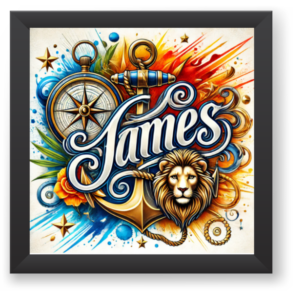
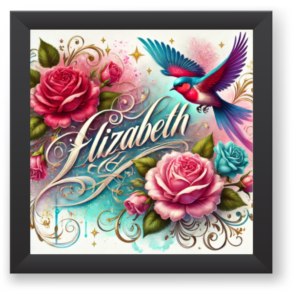
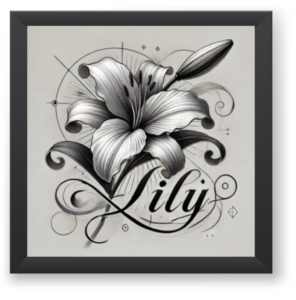
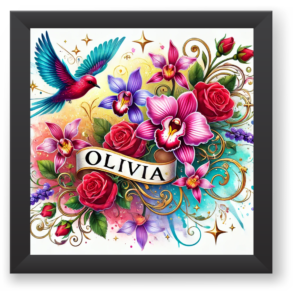
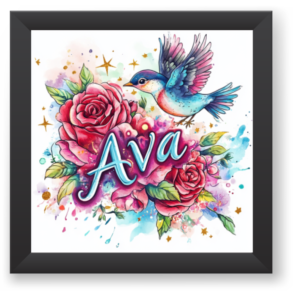

Yes, there are several risks associated with getting a name tattoo, both physically and emotionally. While name tattoos can be meaningful and symbolic, it’s important to consider these potential risks before committing to one:

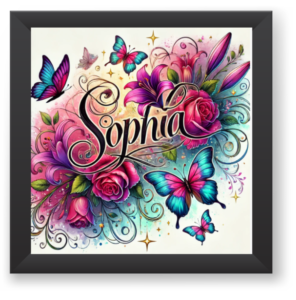

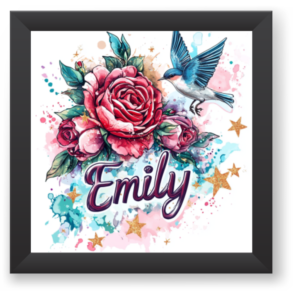

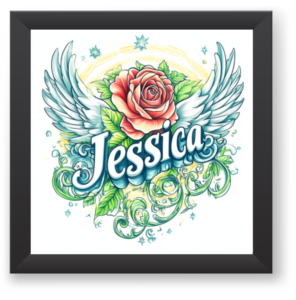
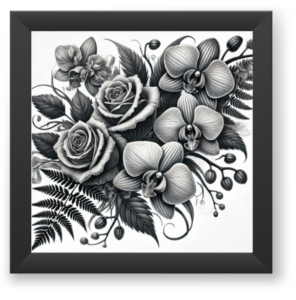
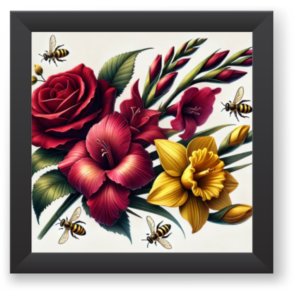
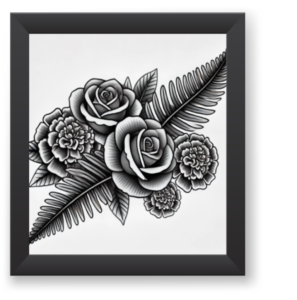
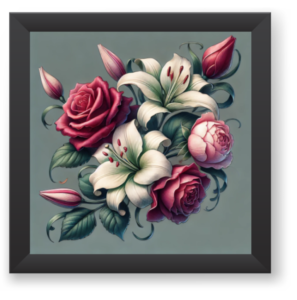
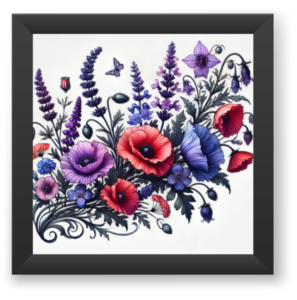
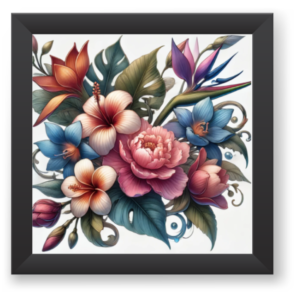
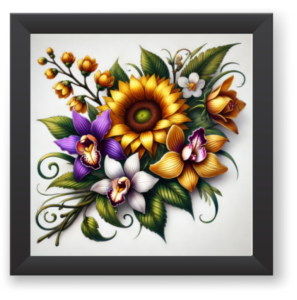
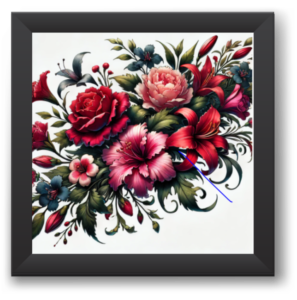
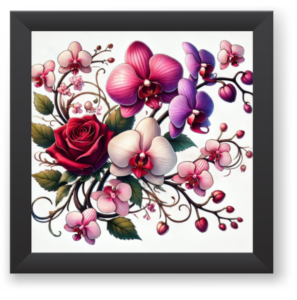
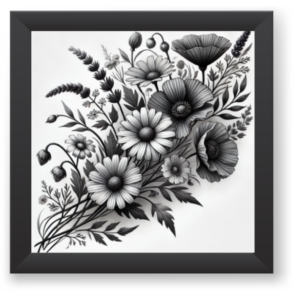
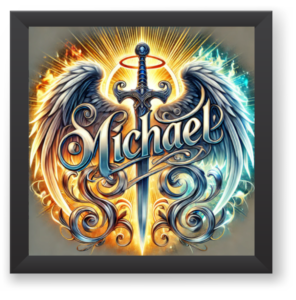

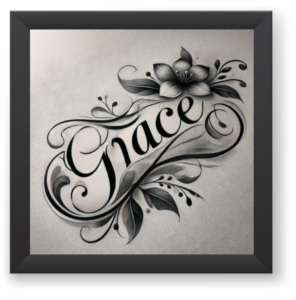 Name tattoos hold deep emotional and symbolic significance, often representing important relationships, memories, or milestones in a person’s life. Here’s a breakdown of what makes them meaningful.
Name tattoos hold deep emotional and symbolic significance, often representing important relationships, memories, or milestones in a person’s life. Here’s a breakdown of what makes them meaningful.